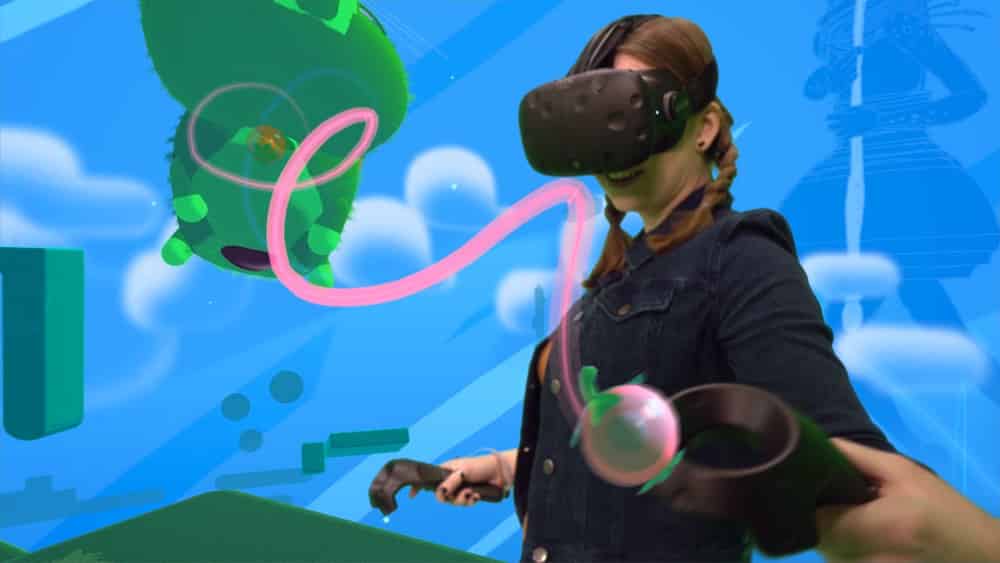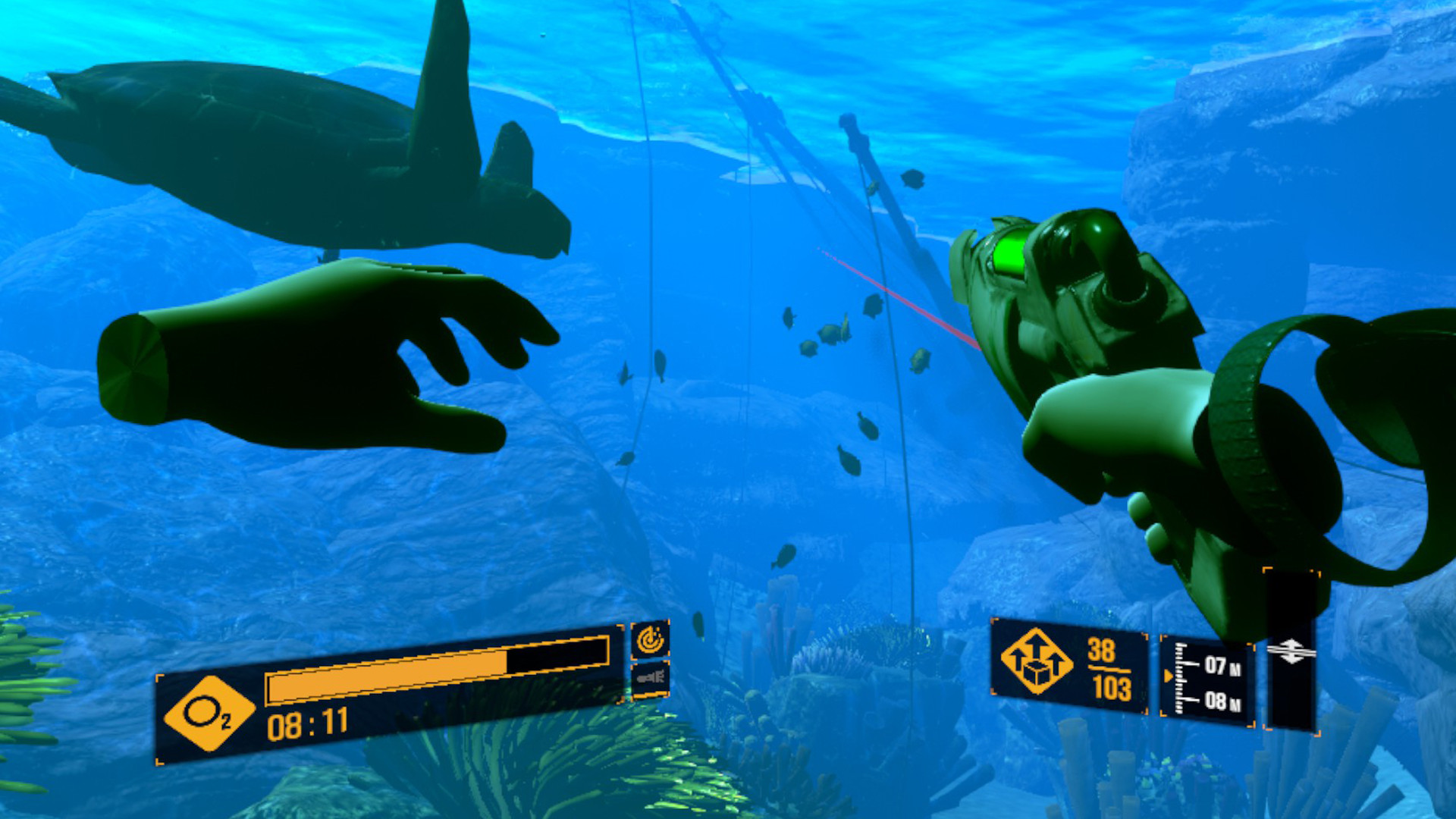“The Immersive Frontier: A Deep Dive into VR Headsets
Artikel Terkait The Immersive Frontier: A Deep Dive into VR Headsets
- NFT Scams: How To Spot Them And Protect Yourself
- The Golden Ticket To The Metaverse: Understanding NFT Whitelists
- The Vibrant World Of NFT Communities: A Deep Dive
- Generative Art: Where Code Meets Creativity
- NFT Licensing: Navigating The Complex World Of Digital Ownership And Commercial Rights
Table of Content
Video tentang The Immersive Frontier: A Deep Dive into VR Headsets
The Immersive Frontier: A Deep Dive into VR Headsets

Virtual Reality (VR) has transitioned from a futuristic fantasy to a tangible reality, largely thanks to the rapid evolution of VR headsets. These devices have unlocked immersive experiences across gaming, entertainment, education, and even professional training. This article delves into the world of VR headsets, exploring their technology, types, key features, applications, and the exciting future they promise.
What is a VR Headset?
At its core, a VR headset is a head-mounted display (HMD) that provides a stereoscopic view of a virtual environment. This means it presents slightly different images to each eye, creating a sense of depth and immersion. When combined with motion tracking, VR headsets allow users to interact with and navigate within these virtual worlds, making them feel present in a simulated reality.
Key Components of a VR Headset:
- Display: The display is the heart of the VR headset. It typically consists of two small LCD or OLED screens, one for each eye. Resolution, refresh rate, and field of view (FOV) are critical factors determining the visual quality and immersion.
- Lenses: Lenses are positioned between the display and the user’s eyes to focus the light and create a clear, wide image. Fresnel lenses are commonly used for their compact size and ability to minimize distortion.
- Tracking Sensors: These sensors track the user’s head movements and position in real space. This data is used to update the virtual viewpoint, ensuring that the virtual world moves in sync with the user’s actions.
- Motion Sensors: Accelerometers, gyroscopes, and magnetometers detect the headset’s orientation and movement.
- Positional Tracking: External cameras or sensors (in the case of outside-in tracking) or built-in cameras (in the case of inside-out tracking) determine the headset’s position in the room.
- Audio: Integrated headphones or headphone jacks provide spatial audio, further enhancing the sense of immersion by simulating the direction and distance of sounds in the virtual environment.
- Controllers: Handheld controllers allow users to interact with the virtual world. They typically feature buttons, triggers, and trackpads for various actions and gestures.
- Connectivity: VR headsets connect to a computer or console via cables (HDMI, USB) or wirelessly (Bluetooth, Wi-Fi) to receive visual and audio data.

Types of VR Headsets:

VR headsets can be broadly categorized into three main types:
-
PC-Powered VR Headsets:
- Overview: These headsets offer the highest fidelity and performance, as they rely on the processing power of a dedicated gaming PC.
- Examples: Oculus Rift S, HTC Vive Cosmos, Valve Index.
- Pros:
- Superior graphics and processing power.
- Wider range of VR experiences and games.
- More advanced tracking capabilities.
- Cons:
- Higher cost (requires a powerful PC).
- Tethered connection can limit movement.
- More complex setup.

-
Standalone VR Headsets:
- Overview: These headsets are self-contained units with built-in processors, displays, and batteries. They don’t require a PC or smartphone to operate.
- Examples: Oculus Quest 2, HTC Vive Focus 3.
- Pros:
- Wireless and portable.
- Easy to set up and use.
- More affordable than PC-powered headsets.
- Cons:
- Lower graphics and processing power compared to PC-powered headsets.
- Limited storage capacity.
- Shorter battery life.
-
Mobile VR Headsets:
- Overview: These headsets use a smartphone as the display and processor. The phone is inserted into the headset, and the VR experience is rendered on the phone’s screen.
- Examples: Google Cardboard, Samsung Gear VR (discontinued).
- Pros:
- Most affordable option.
- Portable and easy to use.
- Cons:
- Lowest graphics and processing power.
- Limited tracking capabilities.
- Dependence on smartphone compatibility.
- Generally considered an entry-level VR experience.
Key Features to Consider When Choosing a VR Headset:
- Resolution: Higher resolution provides sharper and more detailed visuals, reducing the "screen door effect" (where the individual pixels are visible).
- Refresh Rate: A higher refresh rate (measured in Hertz) reduces motion blur and eye strain, resulting in a smoother and more comfortable experience. 90Hz or higher is generally recommended.
- Field of View (FOV): A wider FOV increases the sense of immersion by filling more of the user’s peripheral vision. 100 degrees or more is desirable.
- Tracking Technology: Inside-out tracking (where the headset tracks its position using built-in cameras) offers more freedom of movement compared to outside-in tracking (which requires external sensors).
- Ergonomics and Comfort: A comfortable headset is essential for long VR sessions. Consider the weight, adjustability, and padding of the headset.
- Ecosystem and Content Library: The availability of games, apps, and experiences is a crucial factor. Consider the platforms and stores supported by the headset.
- Audio Quality: Integrated headphones or headphone jacks with spatial audio support enhance the sense of immersion.
- Controllers: The design and functionality of the controllers can significantly impact the VR experience. Look for controllers that are comfortable to hold and offer precise tracking.
Applications of VR Headsets:
VR headsets have a wide range of applications across various industries:
- Gaming: VR gaming offers immersive and interactive experiences that go beyond traditional gaming. Players can step into the game world and interact with characters and environments in a realistic way.
- Entertainment: VR headsets can be used to watch movies, TV shows, and live events in a virtual cinema or stadium. They can also provide immersive experiences for concerts, sports, and other forms of entertainment.
- Education: VR can create immersive learning environments for students of all ages. Students can explore historical sites, dissect virtual organisms, or practice complex procedures in a safe and engaging way.
- Training and Simulation: VR is used to train professionals in various fields, such as medicine, aviation, and manufacturing. VR simulations allow trainees to practice skills in a realistic and risk-free environment.
- Healthcare: VR is used for pain management, rehabilitation, and therapy. It can help patients cope with chronic pain, recover from injuries, and overcome phobias and anxieties.
- Design and Engineering: VR allows designers and engineers to visualize and interact with 3D models of products and structures. This can help them identify design flaws and improve the overall quality of their work.
- Real Estate: VR can be used to create virtual tours of properties, allowing potential buyers to explore homes from the comfort of their own homes.
- Social Interaction: VR platforms allow people to connect and interact with each other in virtual spaces. This can be used for social gatherings, meetings, and collaborative projects.
The Future of VR Headsets:
The future of VR headsets is bright, with ongoing advancements in technology and increasing adoption across various industries. Some key trends to watch include:
- Higher Resolution and Refresh Rates: VR headsets will continue to improve in terms of visual fidelity, with higher resolutions and refresh rates becoming the norm.
- Wireless and Standalone VR: Standalone VR headsets will become more powerful and feature-rich, offering a compelling alternative to PC-powered headsets.
- Improved Tracking and Input: Tracking technology will become more precise and reliable, allowing for more natural and intuitive interactions in VR. New input methods, such as hand tracking and eye tracking, will further enhance the VR experience.
- Augmented Reality (AR) Integration: VR and AR technologies will converge, leading to headsets that can seamlessly blend virtual and real-world elements.
- Metaverse Development: VR headsets will play a key role in the development of the metaverse, a shared virtual world where people can interact, work, and play.
- Haptic Feedback: Haptic technology will become more advanced, allowing users to feel textures, shapes, and forces in VR.
- Brain-Computer Interfaces (BCIs): In the more distant future, BCIs could allow users to control VR experiences with their thoughts, opening up entirely new possibilities for interaction and immersion.
Conclusion:
VR headsets have come a long way in a short time, and they are poised to revolutionize the way we interact with technology and the world around us. Whether you’re a gamer, a student, a professional, or simply curious about the future of technology, VR headsets offer a gateway to immersive experiences that were once only imagined in science fiction. As technology continues to advance and prices become more affordable, VR headsets will become an increasingly integral part of our lives, transforming the way we learn, work, play, and connect with each other.
